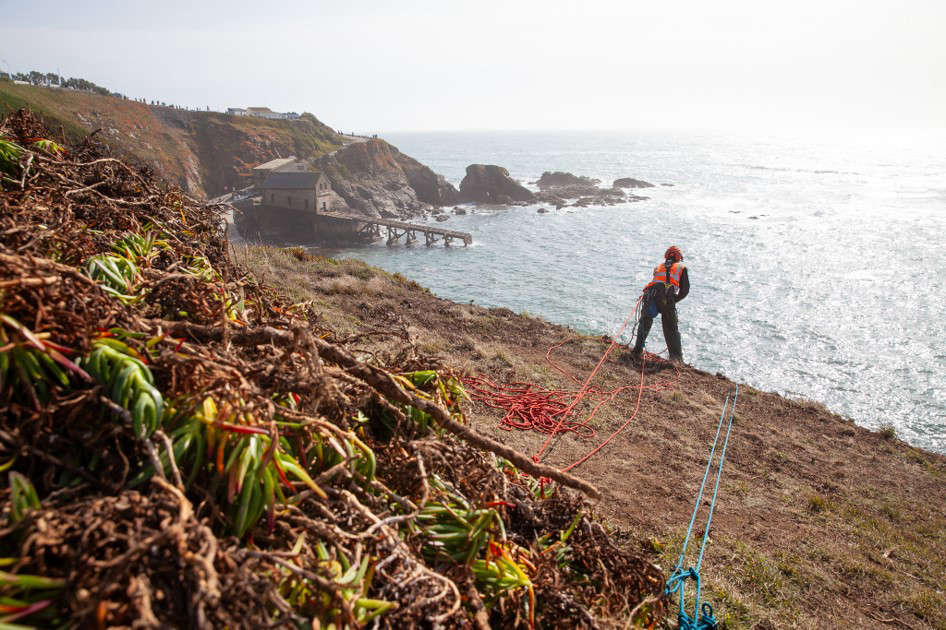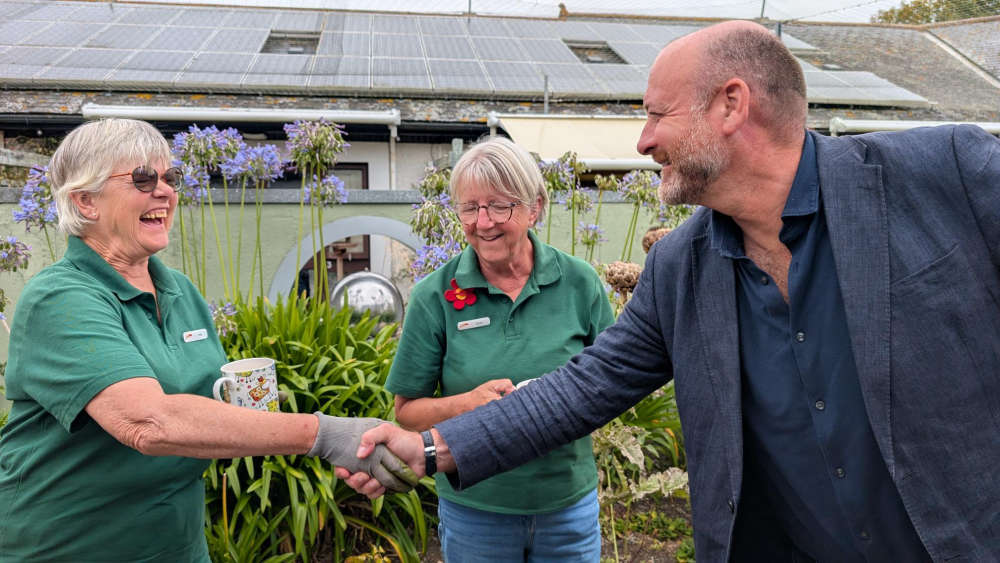
The results of a multi-million pound investment in nature have been revealed alongside the launch of a new guide for supporting the recovery of more than 1,000 species threatened with extinction.
The £13 million pound Species Recovery Programme’s Capital Grants Scheme ran from August 2023 to March 2025, and saw Natural England invest in targeted conservation efforts that gave species such as water vole, oystercatcher, lady’s slipper orchid, hazel dormouse and Atlantic salmon a chance to flourish.
In Cornwall, the Lizard Rarities project, saw the county’s Natural England team work with the National Trust on a £351,000 scheme. The Lizard Peninsula is one of the most biodiverse areas in the country, renowned for the exceptional assemblages of vascular plants, bryophytes and lichens, many of which are largely or wholly confined to the Lizard, known as ‘Lizard Specialities’, and uncovered plants found in areas where they had not previously been seen.
The project supported the delivery of a variety of large scale, targeted land management interventions, such as the creation of 32 scrapes and ponds, scrub removal at 33 priority species hotspots across 13 discrete sites, 14 kilometres of firebreak creation, 11 hectares of invasive non-native species removal, over 450 metres of seasonally flooded historic Lizard trackway restored and the implementation of targeted and improved grazing infrastructure across the peninsula.
These interventions were delivered to aid in the recovery of 15 rare and threatened species such as dwarf rush, land quillwort and heath pouchwort – species that typify the importance of the Lizard Specialities assemblage.
Within the first year, the new pools and scrapes were colonised by rare species such as three-lobed water crowfoot and strawberry stonewort. Habitat management has created connectivity between key sites owned by different landowners. And, the project also delivered 68 days of survey work – which resulted in previously unknown populations of Lizard Specialities being uncovered, including the discovery of over 1,500 pygmy rush plants at a site where they not previously been known.
Meanwhile, the Southwest Rainforest Lichen Recovery Project received a £451,000 grant, for work across both Cornwall and Devon and saw Natural England teams working with Plantlife in temperate rainforests.
These rainforests exist in very specific climatic conditions along the western coasts of the British Isles and a small handful of other locations globally. The habitat is increasingly rare, and its characteristic population of scarce bryophyte and lichen species are threatened by air pollution and habitat degradation.
The project delivered habitat improvements at 12 temperate rainforest sites which support rare and threatened species, such as Tylophoron Hibernicum, Collema Fragrans and Stictographa Lentiginose. Baseline surveys covered over 543 hectares of land and a suite of bespoke habitat management across the project area, including halo thinning, targeted veteranisation, glade management and understorey thinning through cattle grazing regimes. Control of invasive non-native species, such as rhododendron and bamboo, has benefitted 21 threatened species of rainforest lichens and bryophytes.
Tony Juniper, Chair of Natural England, is expected to say at an event in Warwickshire today:
“A rising number of nature recovery projects, both large and small, are making a huge difference up and down the country. The success of this programme is an example of how much we can do when we take a joined up, collaborative approach to restoring the natural world.
“We know we can turn round species decline and improve ecosystems with the right targeted actions, the drive and the funding.
“But time is running out fast - turning round nature’s decline needs to be a collective endeavour, so this is not just the preserve of dedicated specialists. Nature recovery work needs more projects, more volunteers and more money to flow from all sources, particularly the private sector. It will also need to go hand in hand with improved environmental quality, including through reduced pollution.
“The publication of the government’s revised Environmental Improvement Plan in the autumn will be a key moment. We will need to see increased ambition on species recovery, particularly looking at what can be done on some of our lost species. In the coming years, habitat management and creation alongside species reintroductions could be a real game changer for the health of ecosystems and help us achieve the country’s legally binding targets.”
Beyond direct species benefits, nationwide the scheme has helped bring thousands of people closer to nature. Over 80,000 members of the public participated in 465 educational events and activities, and volunteers contributed nearly 100,000 hours of conservation work worth over £1 million. The scheme has also offered a boost for the economy by supporting the equivalent of 60 full time jobs in conservation.
Through the projects, partners have successfully translocated close to 10,000 individual animals and plants to expand species territories, and captive bred 3,105 individuals, including invertebrates, plants, mammals and birds.
Projects have created or enhanced over 2,400ha of wildlife-rich habitat for species to thrive in. This includes a broad range of habitats such as flower-rich grassland meadows, floodplain grasslands, lowland and upland heathland, wetland, and wildlife ponds.
In many areas across the country the work undertaken through this scheme has laid the foundation for continued efforts to help species recover, as 17 projects have already secured funding to continue their work to support their target species.
As part of ongoing work to support the recovery of species, Natural England is also today launching Threatened Species Recovery Actions, a resource which sets out the most important actions to support the recovery of over 1,000 species under threat of extinction in England.
The actions have been developed by Natural England in partnership with eNGOs, expert societies, government agencies, and individual specialists. TSRA will inform species conservation priorities nationally and guide the development of future recovery projects, covering priority species from corncrake and natterjack toad to miniscule lichens, and paving the way to delivering the legally-binding 2042 extinction risk target.



 Modern Monuments Celebrating Communities, Past and Present
Modern Monuments Celebrating Communities, Past and Present
 Heligan beaver babies named by local schools
Heligan beaver babies named by local schools
 Almost 5,000 people flock to Helifest to see second lifesaving helicopter
Almost 5,000 people flock to Helifest to see second lifesaving helicopter
 Cornwall Air Ambulance tasked to almost 500 missions in first half of 2025
Cornwall Air Ambulance tasked to almost 500 missions in first half of 2025
 Boardmasters reveals a significant reduction in anti-social behaviour and zero confirmed spiking incidents recorded at this year's festival
Boardmasters reveals a significant reduction in anti-social behaviour and zero confirmed spiking incidents recorded at this year's festival
 MP Perran Moon Visits St Julia’s Hospice
MP Perran Moon Visits St Julia’s Hospice
 Cornwall Integrated Neighbourhood Teams collaboration shortlisted for national award
Cornwall Integrated Neighbourhood Teams collaboration shortlisted for national award
 Information Sharing Agreement signed in Camborne
Information Sharing Agreement signed in Camborne

